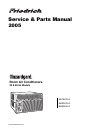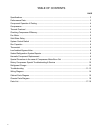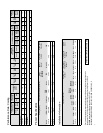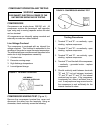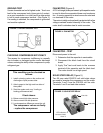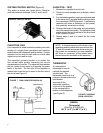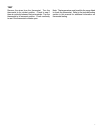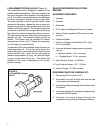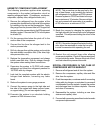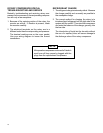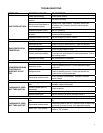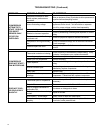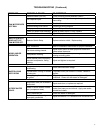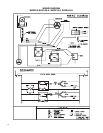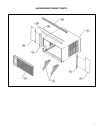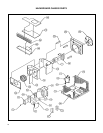
4
COMPRESSOR WINDING TEST (Figure 2.)
Remove the compressor terminal box cover and
disconnect the wires from the terminals. Using an
ohmmeter, check continuity across the following:
COMPONENT OPERATION AND TESTING
COMPRESSORS
Compressors are single phase, 208/230 volt. All
compressor motors are permanent split capacitor
type, using only a running capacitor across the start
and run terminal.
All compressors are internally spring mounted and
externally mounted on rubber isolators.
Line Voltage Overload
The compressor is equipped with an internal line
voltage overload. This overload is embedded in the
windings of the motor to sense the motor temperature.
The overload will open and disconnect the power to the
motor due to high temperatures caused by:
1. A locked rotor.
2. Excessive running amps.
3. High discharge temperature.
4. Low refrigerant charge.
FIGURE 1 INTERNAL OVERLOAD
LINE BREAK
INTERNAL OVERLOAD
OHMMETER
FIGURE 2 COMPRESSOR WINDING TEST
Testing Procedures
1. Terminal "C" and "S" - no continuity - open
winding - replace compressor.
2. Terminal "C" and "R" - no continuity - open
winding - replace compressor.
3. Terminal "R" and "S" - no continuity open
winding - replace compressor.
4. Terminal "C" and the shell of the compressor
– continuity – grounded motor – replace
compressor.
5. Should continuity exist between terminals
"R" and "S", but not between terminals
"C" and "S" and "C" and "R", the internal
overload may be open. If the compressor
is extremely hot, allow it suffi cient time to
cool. It may require as long as one hour for
the compressor to cool suffi ciently for the
internal overload to close.
WARNING
DISCONNECT ELECTRICAL POWER TO THE
UNIT BEFORE SERVICING OR TESTING



